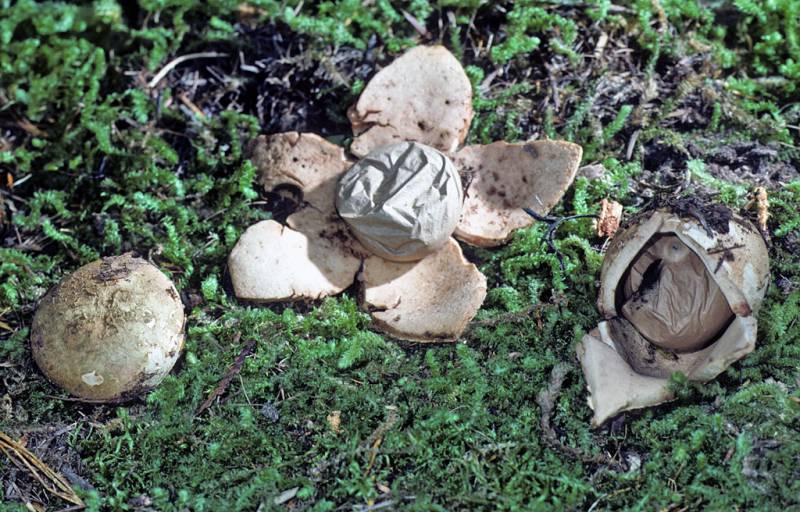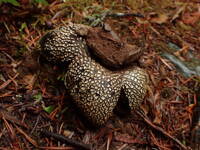Habitat: roads, railroad tracks, in waste places, old fields, etc.
Conservation Status: Not of concern
Edibility: not edible.
not edible.
Fruiting body: round or somewhat flattened when young, the outer wall then splitting into 6 or more rays; 5-15 cm or more broad when fully expanded. Rays: hygroscopic (unfolding in wet weather, closing up over the spore case in dry weather), thick (3-6mm), tough and leathery becoming hard or woody when dry; exterior (underside) with a thin coating of matted brownish fibrils which may or may not wear away; upper surface (interior) often conspicuously cracked or fissured transversely to form a checked pattern; tan when fresh (but dark brown in the cracks), darker overall in age (but weathered specimens sometimes whitened. Spore Case: 2.5-5 cm broad, round or somewhat flattened, sessile (not seated on a stalk); at first roughened, veined, or fibrillose, but soon smooth or merely roughened; grayish-brown to brown; rupturing irregularly in age, i.e., not forming a distinct pore.
Sources: Arora, David. Mushrooms Demystified. Berkeley, Ten Speed Press, 1986.
PNW Herbaria: Specimen records of Astraeus pteridis in the Consortium of Pacific Northwest Herbaria database
CalPhotos: Astraeus pteridis photos




